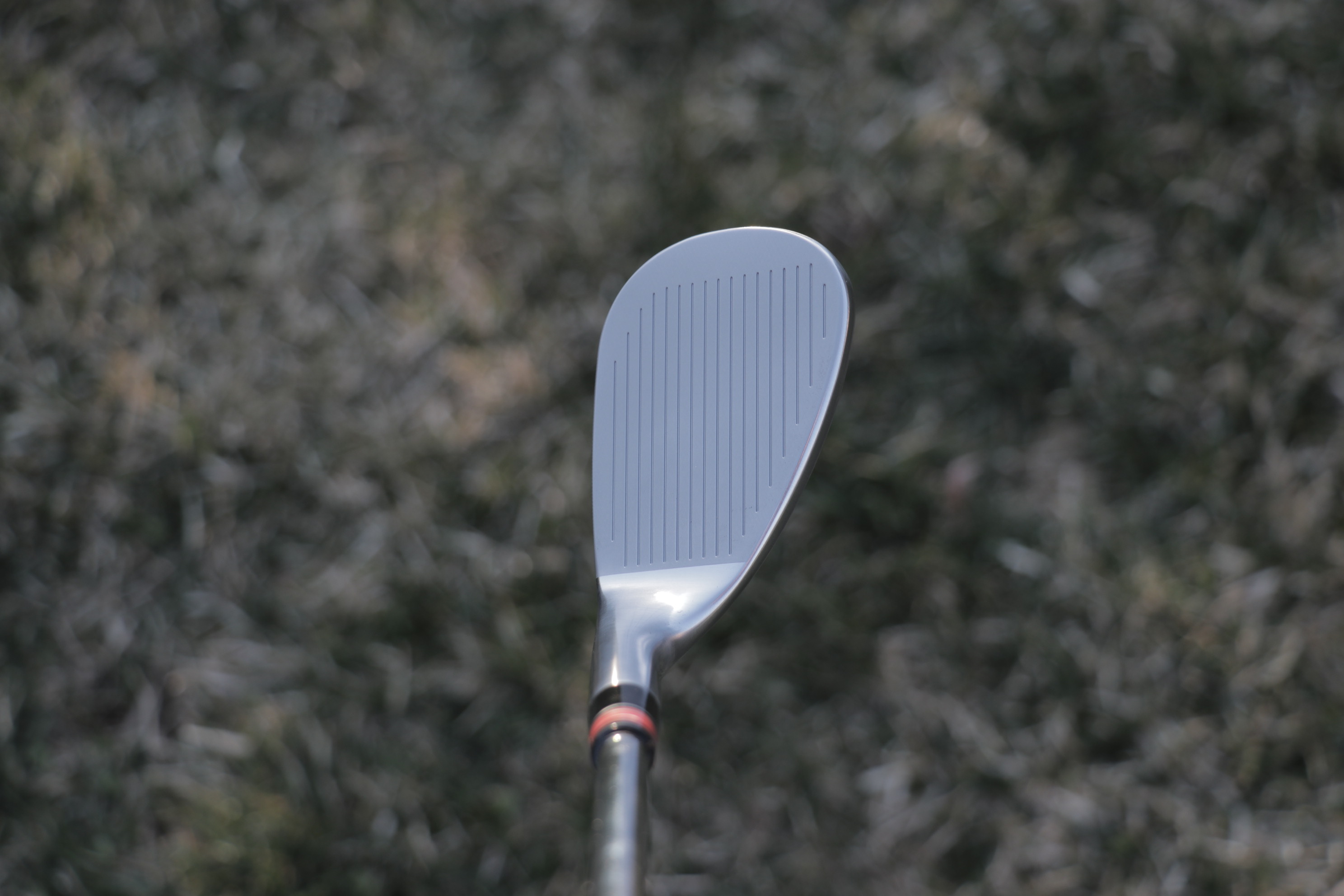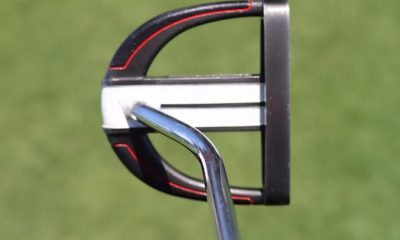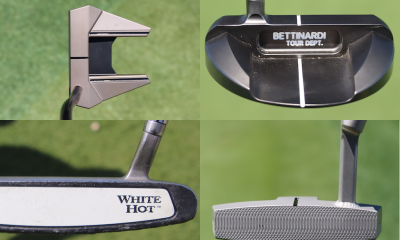Instruction
The Wedge Guy: Re-think mid-range wedge shots

For over 30 years, I have been almost myopically focused on scoring range performance, from the design of wedges to the study of techniques of golfers of all skill levels. I’ve had the good fortune of having reviewed over 50,000 golfers’ wedge-fitting profiles, and countless one-on-one conversations with every-day golfers to tour professionals and teaching pros alike. And I try to continually learn from all those encounters.
From my observations of most recreational golfers and their scoring range performance, the vast majority of players seem to routinely and almost automatically reach for their highest-lofted wedge when they have a less-than-full shot into the green. By that I mean any shot from just under full-swing yardage to greenside chips and short pitches.
I also believe that tendency or habit is costing many golfers in their scoring range success rate. Let me share some insight with you that you can use to improve some of your “red zone” shotmaking.
A few weeks ago, I wrote a column that shared why wedge “mastery” is so elusive for the recreational golfer, regardless of his or her skill level. You can read that article HERE. The key element to that elusive mastery of shot making with wedges is that the high degree of loft makes all wedge shots somewhat of a glancing blow to the ball, when you compare it to the impact with a 7-iron, let’s say, or even a driver. Those lower lofted clubs deliver a more direct blow to the ball.
In our most recent robotic and live golfer testing of wedge shots at intermediate ranges, we often saw a higher spin rate achieved with a lower lofted wedge . . . say a 54 rather than a 58 or 60. The reason for that is that impact is more direct, and more of the mass of the clubhead is above the strike point on the face. That improves “gear effect”, which is a basic principle of golf clubhead design.
Rather than get into anything super-technical, however, I will share my own experience gained as we have tested and measured the Edison Forged and other wedges in all kinds of shot-making scenarios. At 40-70 yards, as you would expect, shots hit with the 53 to 56 loft range would almost always deliver a lower trajectory than shots with 58 to 61 degree loft wedges. But you are likely surprised that the lower lofts consistently delivered as much or more spin and a tighter long-short dispersion variance.
In my own play, that research has inspired me to hit more of those mid-range shots with my 53 than with my 57, and the results are much more consistent. I still like the 57 for shots around the greens when I need that bit of extra loft, but I also reach for that 53 and even my 49 or 45 when the shot doesn’t call for a high ball flight because there is very little green to work with.
Another area where the lower lofted wedge is to your advantage is when the ball is sitting up in the rough. With the higher lofted wedge, you are much more likely to make impact high on the face, which greatly reduces the smash factor and therefore, how far the shot can travel. If you simply “loft down” one or two clubs – my bet is that you will dramatically improve your performance with these shots.
I encourage all of you to turn yourselves into “mad scientists” as well, and experiment with hitting those mid-range wedge shots with the next lower loft than you might ordinarily turn to. My bet is that you will quickly see your distance control improve, and you’ll be pleased with the launch angles and spin you still get.
- LIKE546
- LEGIT95
- WOW25
- LOL10
- IDHT6
- FLOP11
- OB3
- SHANK9
Instruction
Clement: Laid-off or perfect fade? Across-the-line or perfect draw?

Some call the image on the left laid off, but if you are hitting a fade, this could be a perfect backswing for it! Same for across the line for a draw! Stop racking your brain with perceived mistakes and simply match backswing to shot shape!
- LIKE0
- LEGIT0
- WOW0
- LOL0
- IDHT0
- FLOP0
- OB0
- SHANK1
Instruction
The Wedge Guy: The easiest-to-learn golf basic

My golf learning began with this simple fact – if you don’t have a fundamentally sound hold on the golf club, it is practically impossible for your body to execute a fundamentally sound golf swing. I’m still a big believer that the golf swing is much easier to execute if you begin with the proper hold on the club.
As you might imagine, I come into contact with hundreds of golfers of all skill levels. And it is very rare to see a good player with a bad hold on the golf club. There are some exceptions, for sure, but they are very few and very far between, and they typically have beat so many balls with their poor grip that they’ve found a way to work around it.
The reality of biophysics is that the body moves only in certain ways – and the particulars of the way you hold the golf club can totally prevent a sound swing motion that allows the club to release properly through the impact zone. The wonderful thing is that anyone can learn how to put a fundamentally sound hold on the golf club, and you can practice it anywhere your hands are not otherwise engaged, like watching TV or just sitting and relaxing.
Whether you prefer an overlap, interlock or full-finger (not baseball!) grip on the club, the same fundamentals apply. Here are the major grip faults I see most often, in the order of the frequency:
Mis-aligned hands
By this I mean that the palms of the two hands are not parallel to each other. Too many golfers have a weak left hand and strong right, or vice versa. The easiest way to learn how to hold the club with your palms aligned properly is to grip a plain wooden ruler or yardstick. It forces the hands to align properly and shows you how that feels. If you grip and re-grip a yardstick several times, then grip a club, you’ll see that the learning curve is almost immediate.
The position of the grip in the upper/left hand
I also observe many golfers who have the butt of the grip too far into the heel pad of the upper hand (the left hand for right-handed players). It’s amazing how much easier it is to release the club through the ball if even 1/4-1/2″ of the butt is beyond the left heel pad. Try this yourself to see what I mean. Swing the club freely with just your left hand and notice the difference in its release from when you hold it at the end of the grip, versus gripping down even a half inch.
To help you really understand how this works, go to the range and hit shots with your five-iron gripped down a full inch to make the club the same length as your seven-iron. You will probably see an amazing shot shape difference, and likely not see as much distance loss as you would expect.
Too much lower (right) hand on the club
It seems like almost all golfers of 8-10 handicap or higher have the club too far into the palm of the lower hand, because that feels “good” if you are trying to control the path of the clubhead to the ball. But the golf swing is not an effort to hit at the ball – it is a swing of the club. The proper hold on the club has the grip underneath the pad at the base of the fingers. This will likely feel “weak” to you — like you cannot control the club like that. EXACTLY. You should not be trying to control the club with your lower/master hand.
Gripping too tightly
Nearly all golfers hold the club too tightly, which tenses up the forearms and prevents a proper release of the club through impact. In order for the club to move back and through properly, you must feel that the club is controlled by the last three fingers of the upper hand, and the middle two fingers of the lower hand. If you engage your thumbs and forefingers in “holding” the club, the result will almost always be a grip that is too tight. Try this for yourself. Hold the club in your upper hand only, and squeeze firmly with just the last three fingers, with the forefinger and thumb off the club entirely. You have good control, but your forearms are not tense. Then begin to squeeze down with your thumb and forefinger and observe the tensing of the entire forearm. This is the way we are made, so the key to preventing tenseness in the arms is to hold the club very lightly with the “pinchers” — the thumbs and forefingers.
So, those are what I believe are the four fundamentals of a good grip. Anyone can learn them in their home or office very quickly. There is no easier way to improve your ball striking consistency and add distance than giving more attention to the way you hold the golf club.
More from the Wedge Guy
- The Wedge Guy: Golf mastery begins with your wedge game
- The Wedge Guy: Why golf is 20 times harder than brain surgery
- The Wedge Guy: Musings on the golf ball rollback
- LIKE86
- LEGIT13
- WOW6
- LOL1
- IDHT0
- FLOP4
- OB1
- SHANK8
Instruction
Clement: Stop ripping off your swing with this drill!

Not the dreaded headcover under the armpit drill! As if your body is defective and can’t function by itself! Have you seen how incredible the human machine is with all the incredible feats of agility all kinds of athletes are accomplishing? You think your body is so defective (the good Lord is laughing his head off at you) that it needs a headcover tucked under the armpit so you can swing like T-Rex?
- LIKE0
- LEGIT2
- WOW2
- LOL0
- IDHT0
- FLOP0
- OB0
- SHANK2
-

 19th Hole2 weeks ago
19th Hole2 weeks agoDave Portnoy places monstrous outright bet for the 2024 Masters
-

 19th Hole3 days ago
19th Hole3 days agoJustin Thomas on the equipment choice of Scottie Scheffler that he thinks is ‘weird’
-

 19th Hole2 weeks ago
19th Hole2 weeks agoTiger Woods arrives at 2024 Masters equipped with a putter that may surprise you
-

 19th Hole3 days ago
19th Hole3 days ago‘Absolutely crazy’ – Major champ lays into Patrick Cantlay over his decision on final hole of RBC Heritage
-

 19th Hole2 weeks ago
19th Hole2 weeks agoTwo star names reportedly blanked Jon Rahm all week at the Masters
-

 19th Hole1 week ago
19th Hole1 week agoReport: LIV Golf identifies latest star name they hope to sign to breakaway tour
-

 19th Hole1 week ago
19th Hole1 week agoNeal Shipley presser ends in awkward fashion after reporter claims Tiger handed him note on 8th fairway
-

 19th Hole1 week ago
19th Hole1 week agoBrandel Chamblee has ‘no doubt’ who started the McIlroy/LIV rumor and why
























Liam
Dec 9, 2021 at 3:35 am
Hi, I found this an interesting read..lol. I have Golfed for 51 years, carried a sub 4 handicap 37 years, sub 1 handicap 14 years, golf professional 27 years. Played with over 100 tour pros from around the world. Who cares…but all old school pros will agree with you. Golf Club manufacturers created the need for players to think they need more wedges. Old school..I will show you how to hit a 51 degree like a 58 degree. Average golfers do not really practice.. they have no time..life is busy. Become minimalist and just have fun
Richard Douglas
Aug 22, 2021 at 12:24 am
All other things being equal, my ranges for partial wedges are:
115-65: SW
65 and in: LW
But now I’m going to experiment more with the GW from those distances to see the difference.
Wedgy
Aug 21, 2021 at 12:38 am
Also it’s a really good reminder to do a clock-swing chart, even if you generally are a “one-wedge” player.
Not sure what that is?
Find your comfortable, repeatable partial swings. Same tempo. Take a few shots with all your wedges, and maybe even your 9-iron, and note the average distance. Do that with either 2 or 3 partial swing tempo/lengths, as well as a full shot. Suddenly you’ll have a chart of a dozen numbers in that middle range. It removes a lot of doubt from what should be an easy shot, but often is not.
ChipNRun
Aug 18, 2021 at 8:09 pm
Article triggers “back to the future shots.” Like most Boomers, I was hitting greenside cut shots with a sand wedge for 15 years before the LW actually emerged.
Today, I have a 48-54-58 mix. The 58* is good for up to half swings – and some days three-quarter – provided I have a fairly smooth lie. This means maybe 3 inches deep and I need a quick up… I’m relying a much on descent angle as spin.
If it’s a shaggy, uneven lie the best club is the 54*. As Terry suggested, I just get a more solid hit from the lesser loft.
Another rule: If the wedge shot is uphill, I look to adjust the 48* to the shot. From 50 yards out and uphill, I’ve had too many 58* shots barely make the fringe and set up a 30-foot putt.
Epic Golfer
Aug 18, 2021 at 4:47 pm
Great article and advice.
Austin Moorw
Aug 18, 2021 at 12:19 pm
What kind of wedge is that
Robert
Aug 18, 2021 at 4:34 pm
I am guessing it is an Edison – based on his bio. If not, it might be an Edel wedge.
Benny
Aug 18, 2021 at 12:08 pm
sooooooooooooooooo well said and stated. one of my buds is a +4 and he ONLY thinks about trajectory over anything else on wedge shots. What trajectory is needed here with the space I have? then if a lot of space is given its use the easiest shot needed of his 3 wedges (pw, gap, lob)